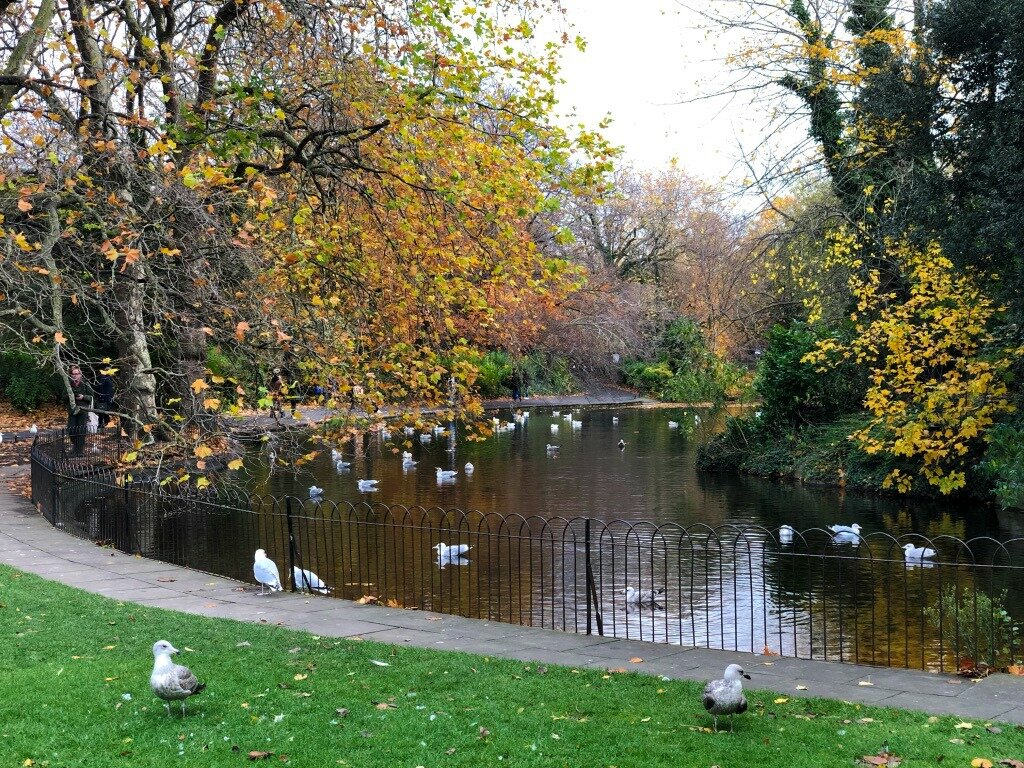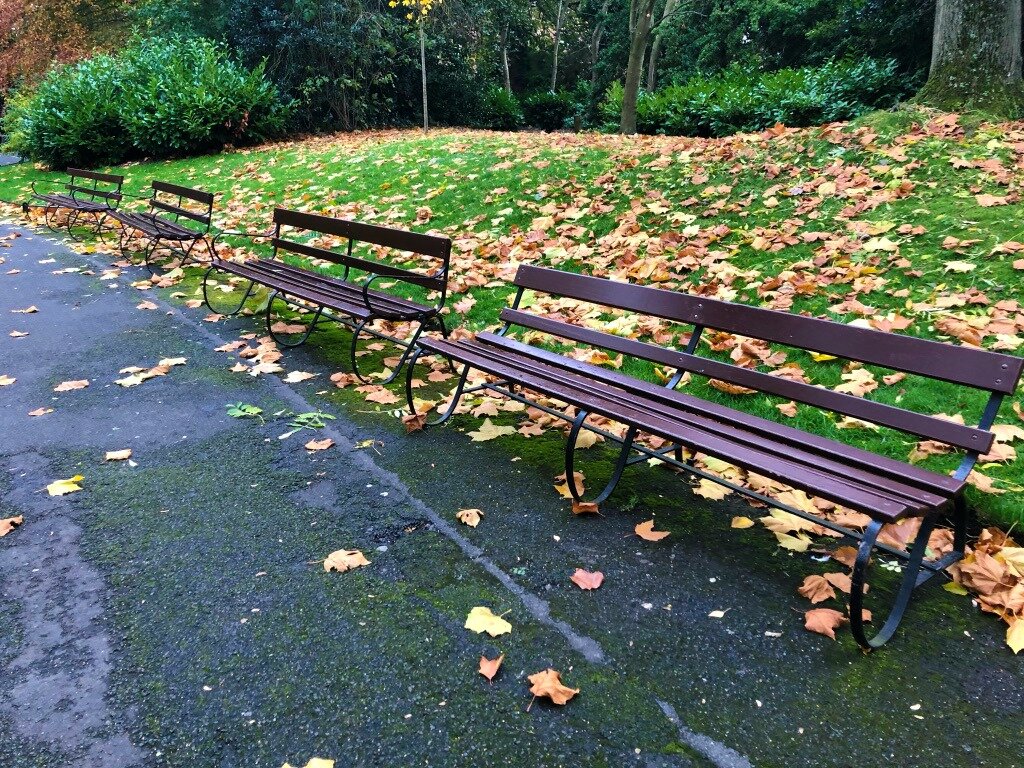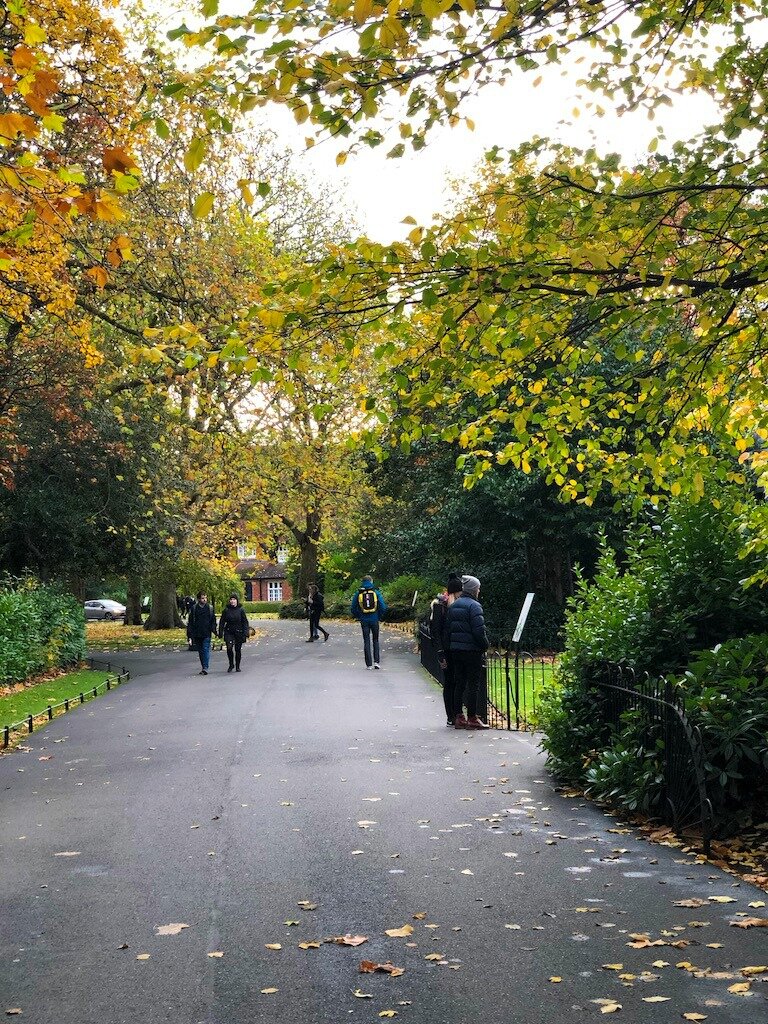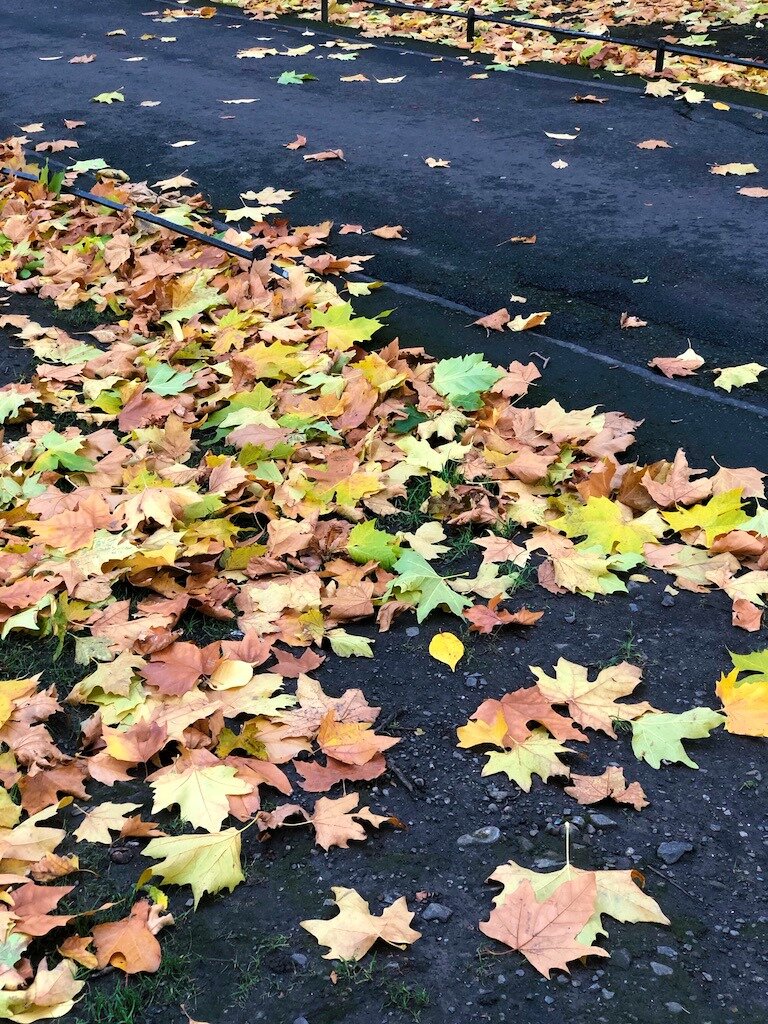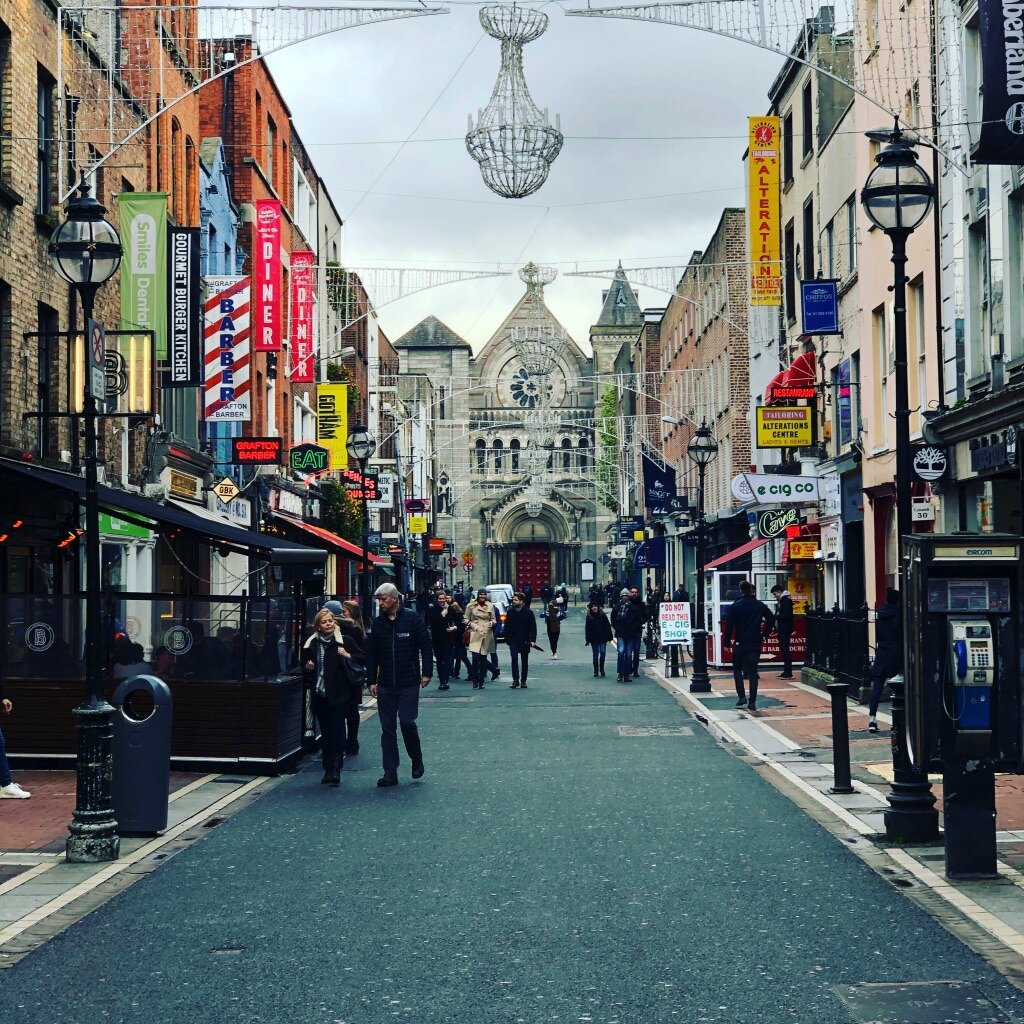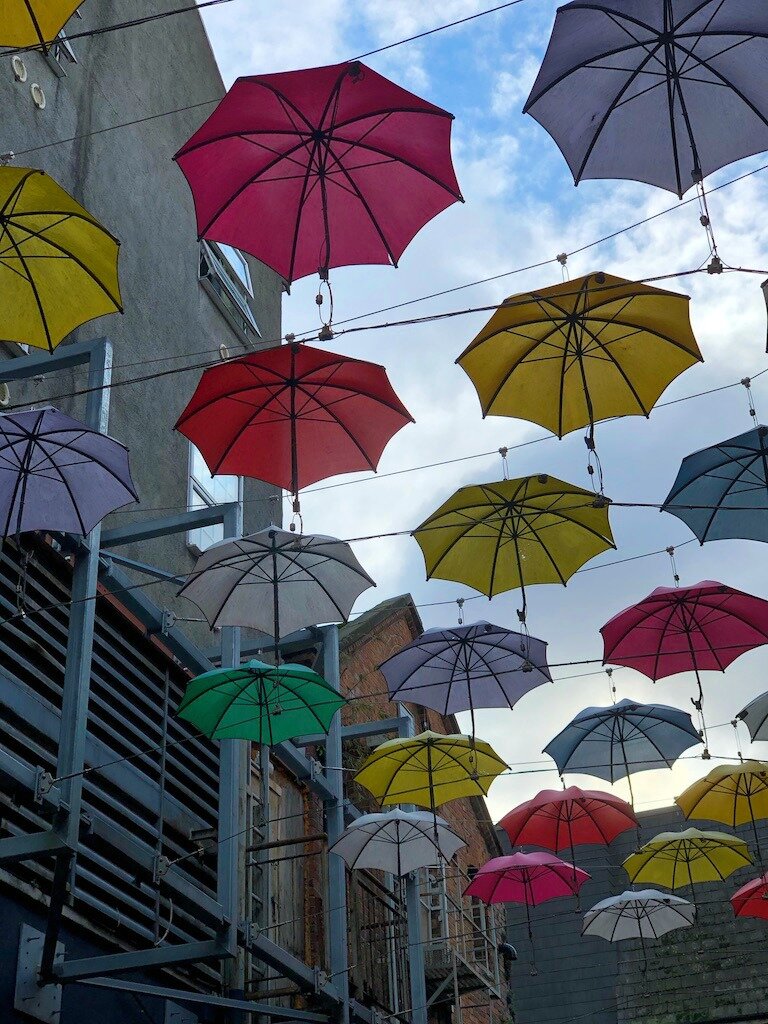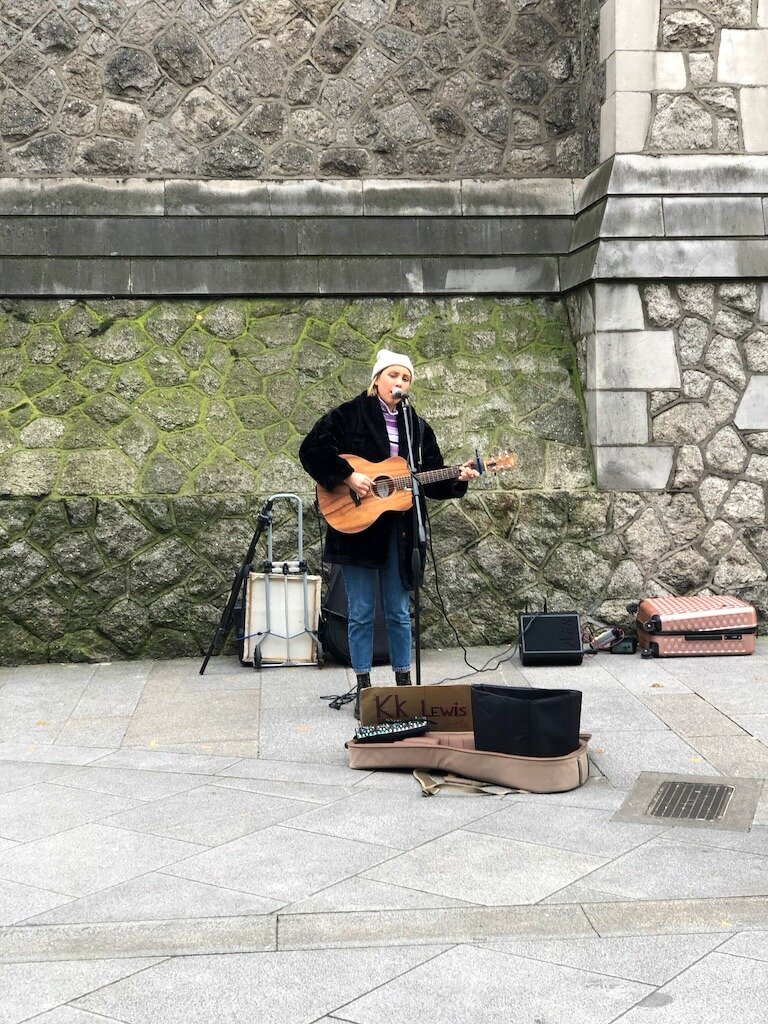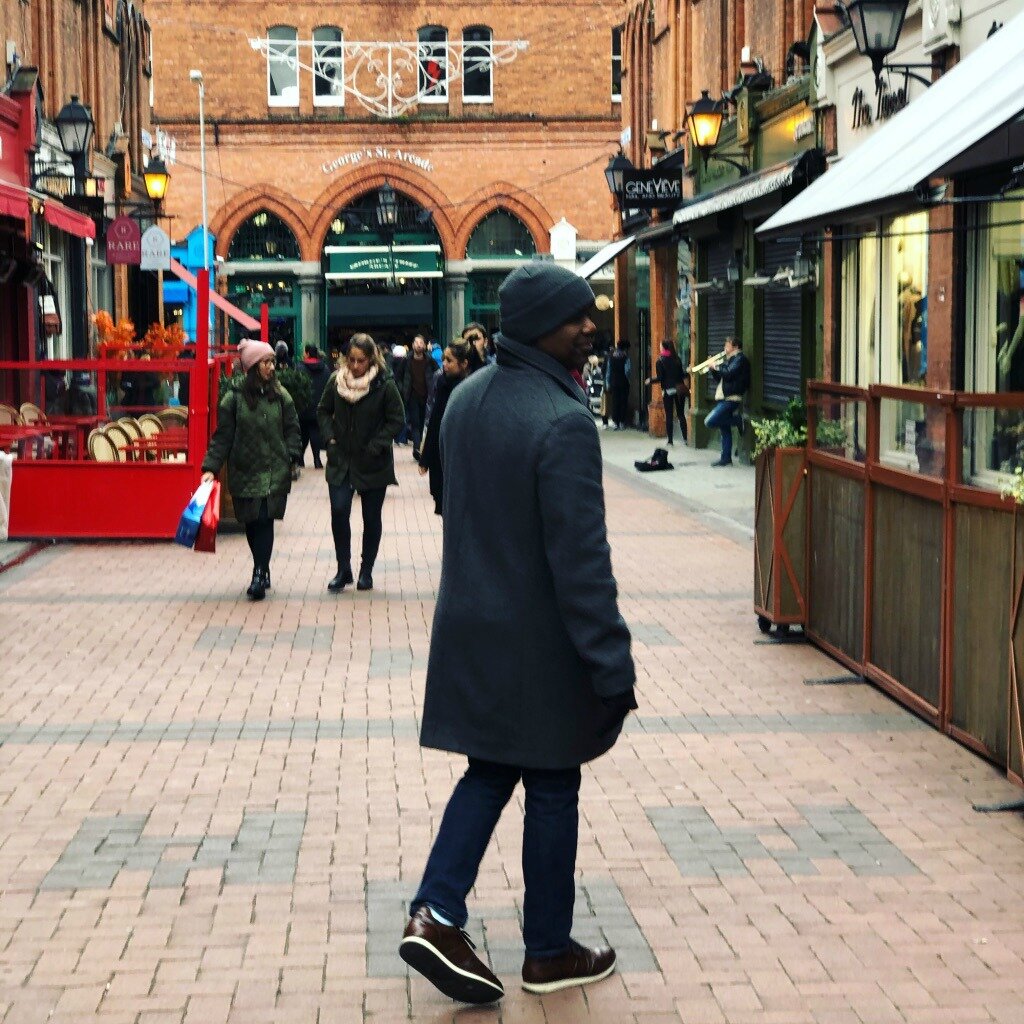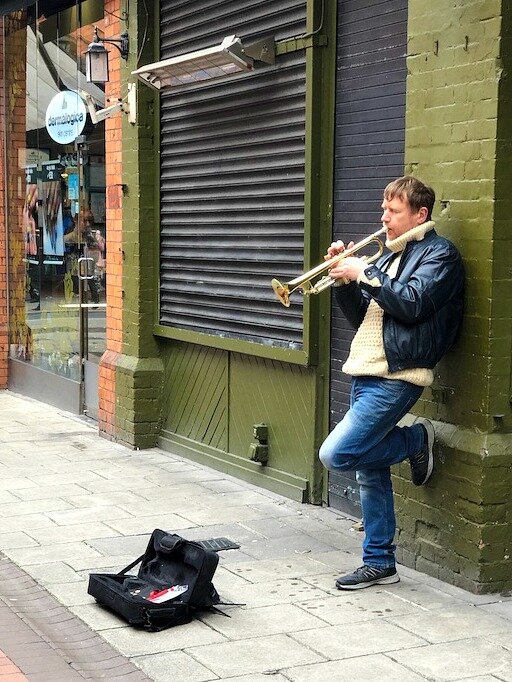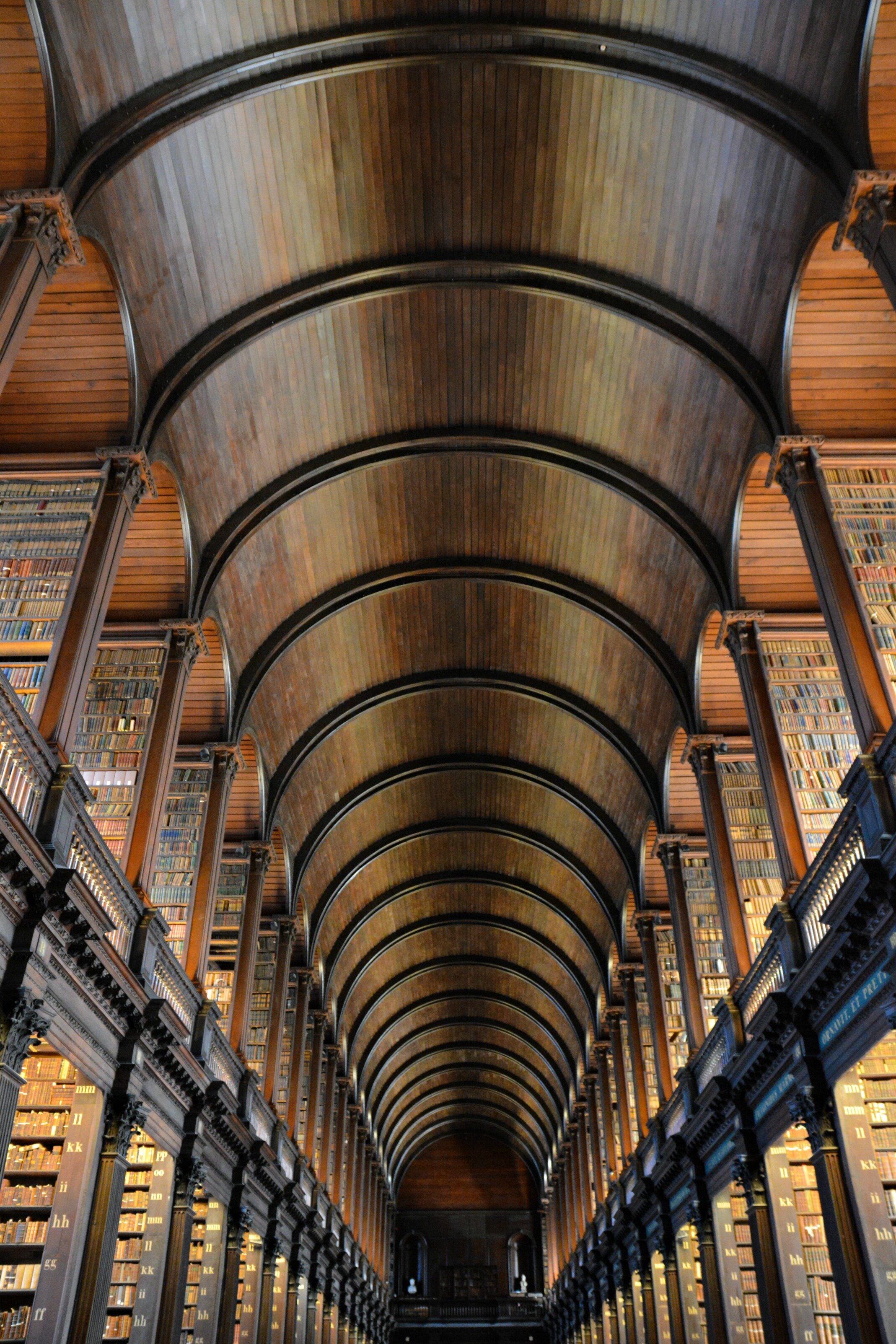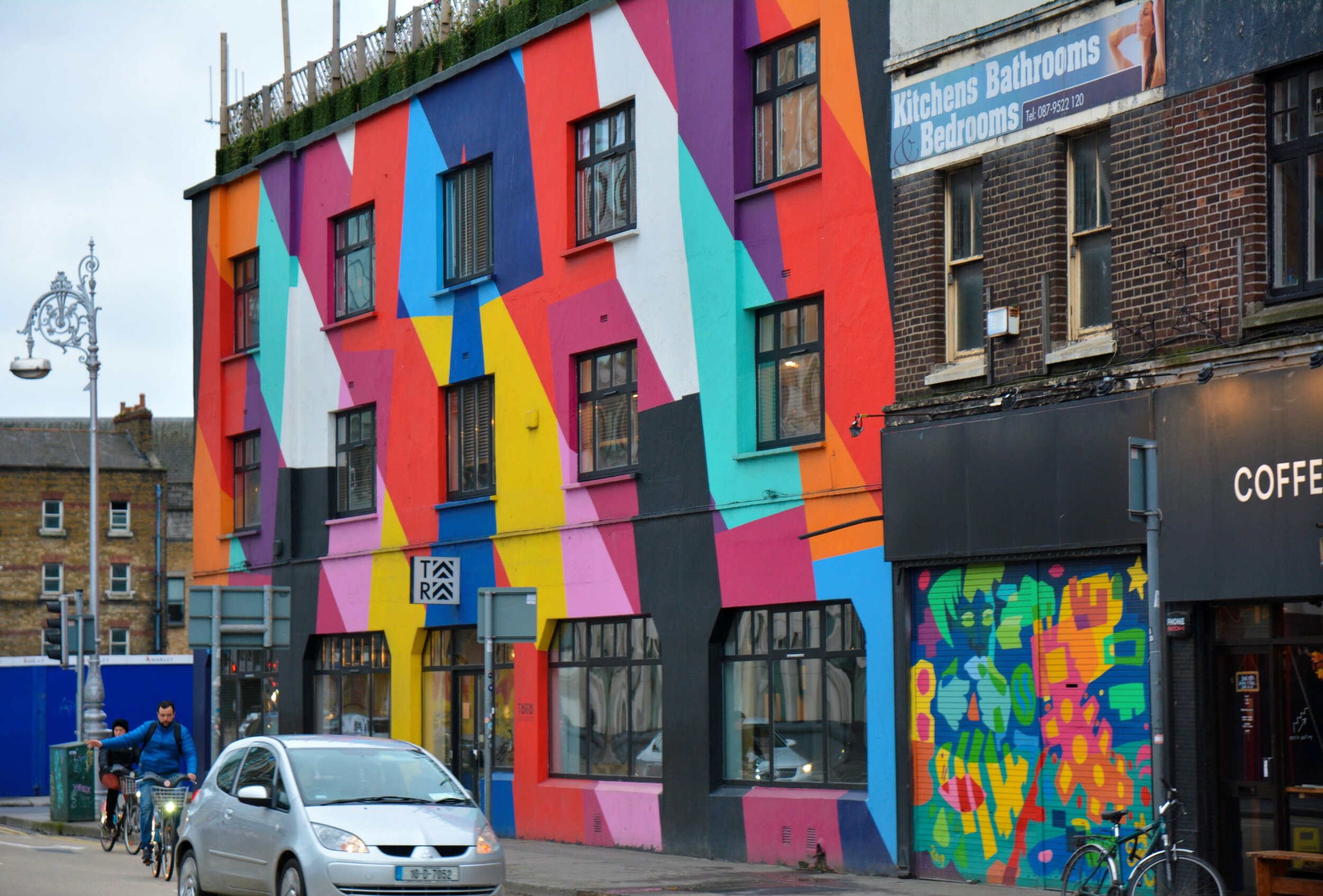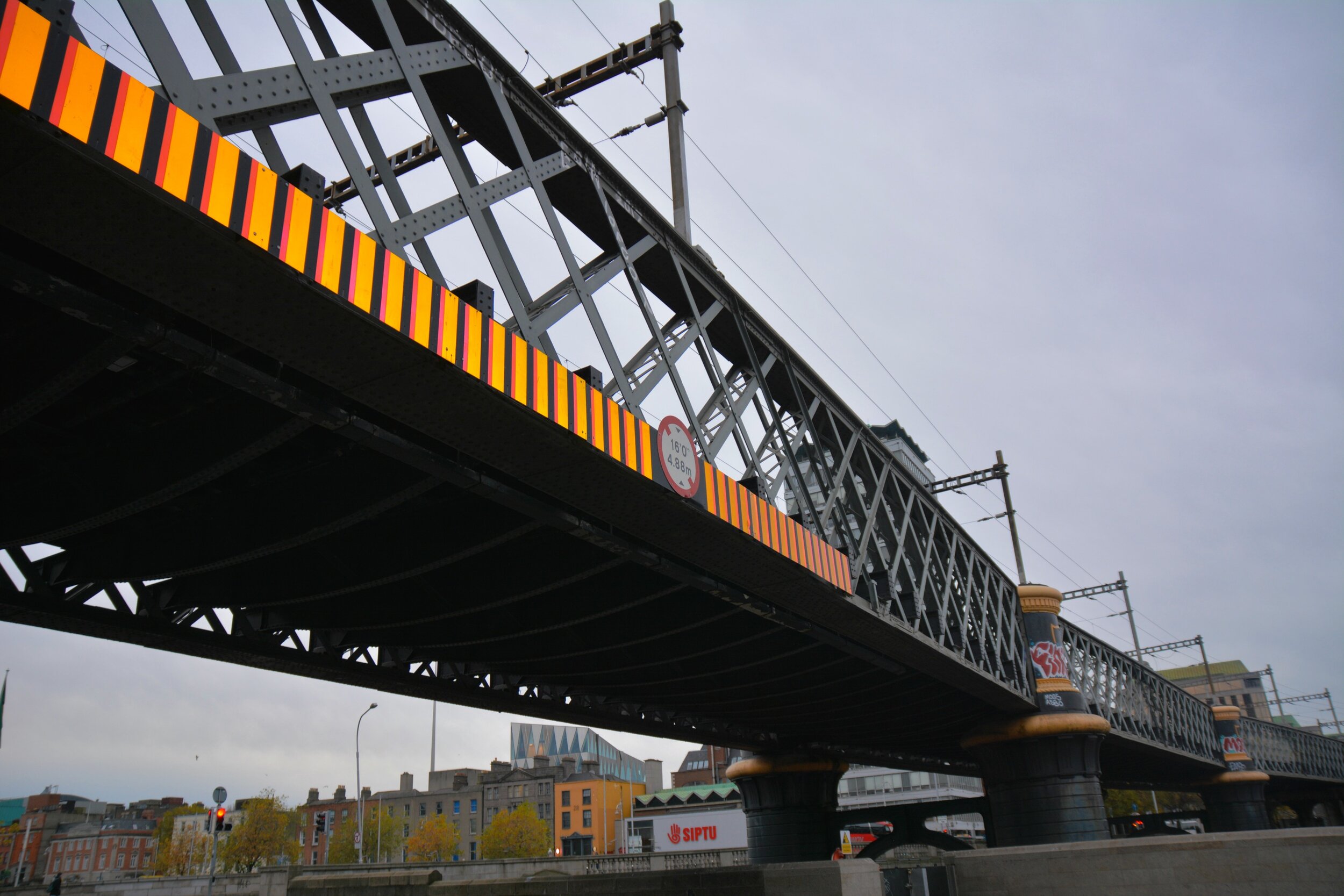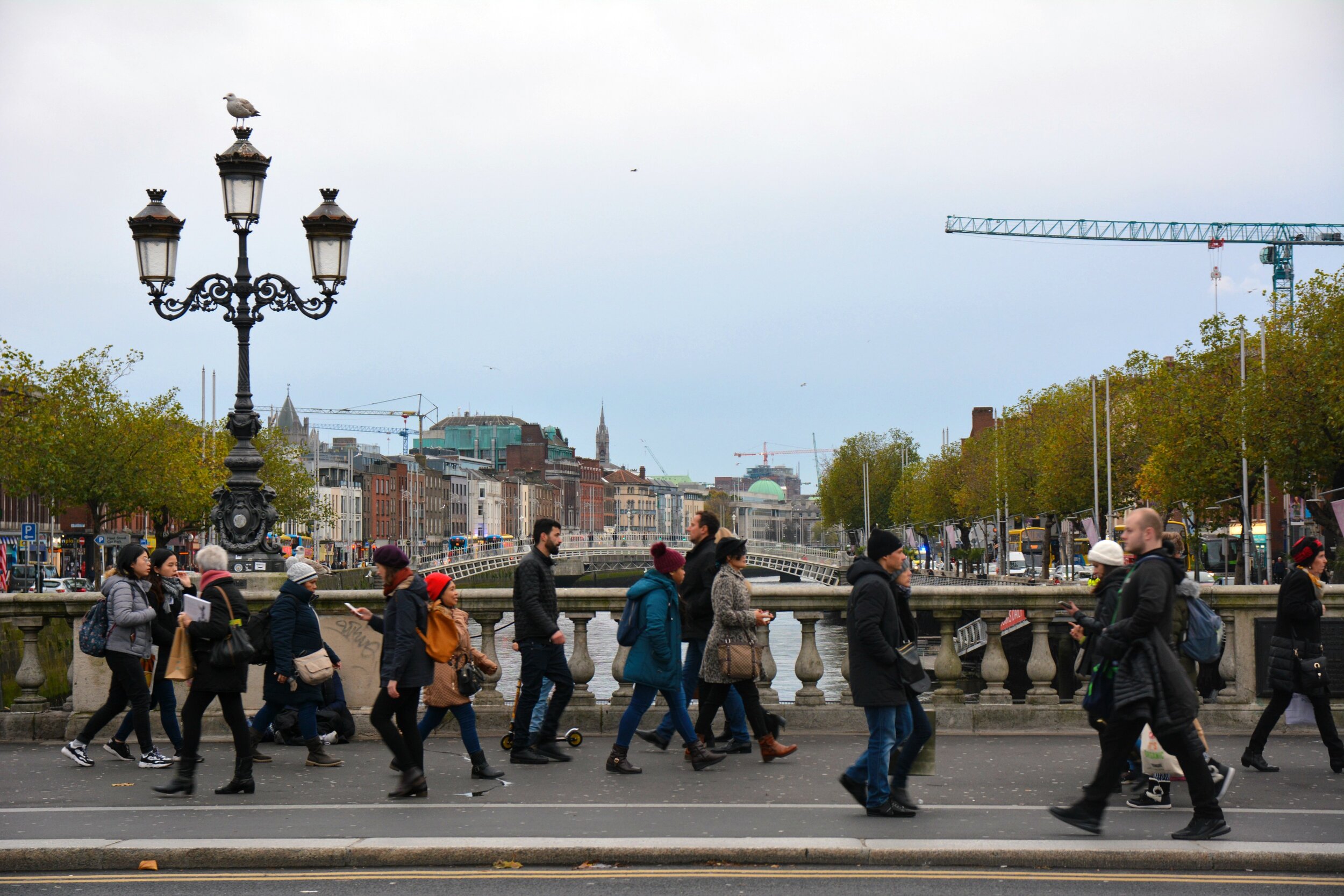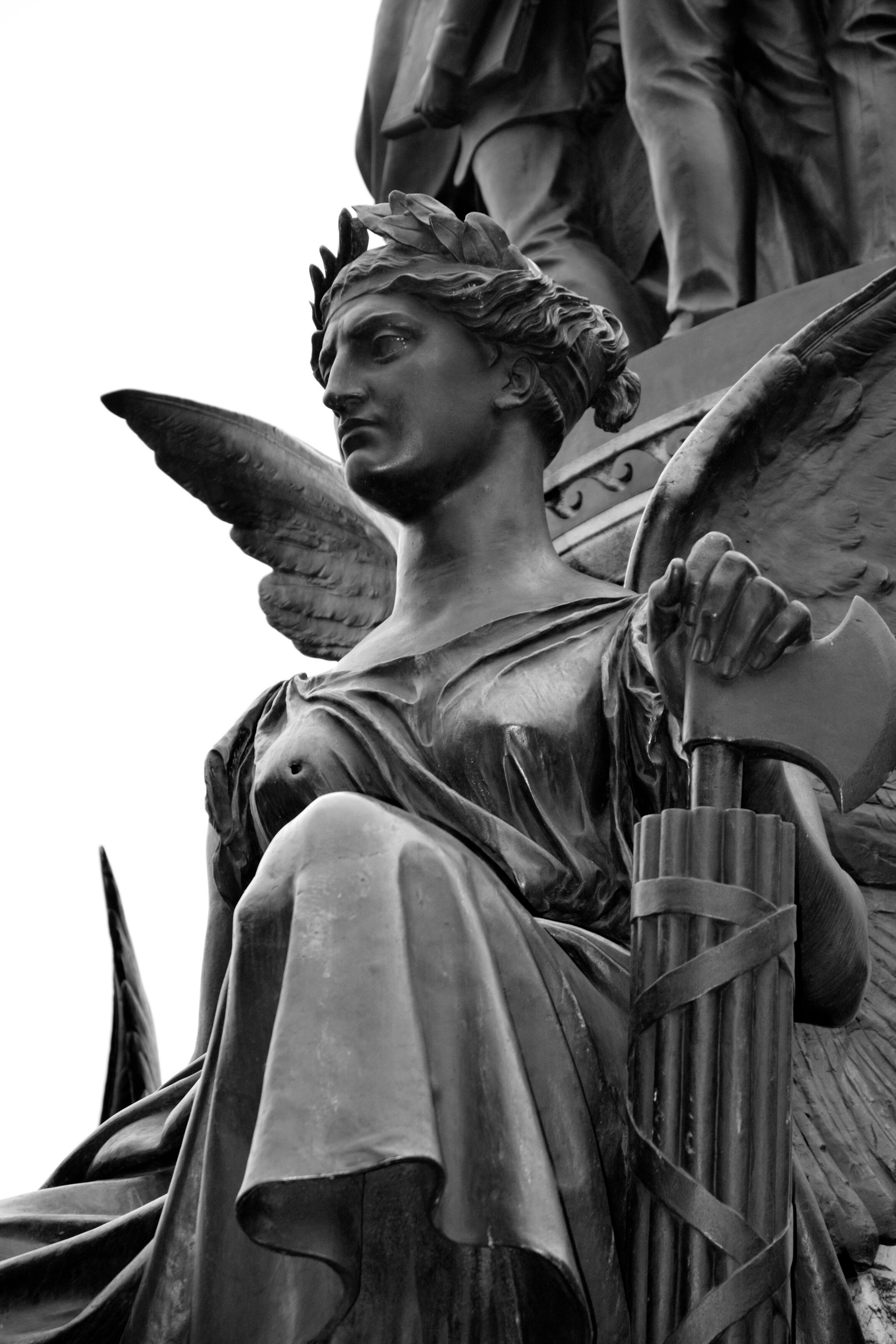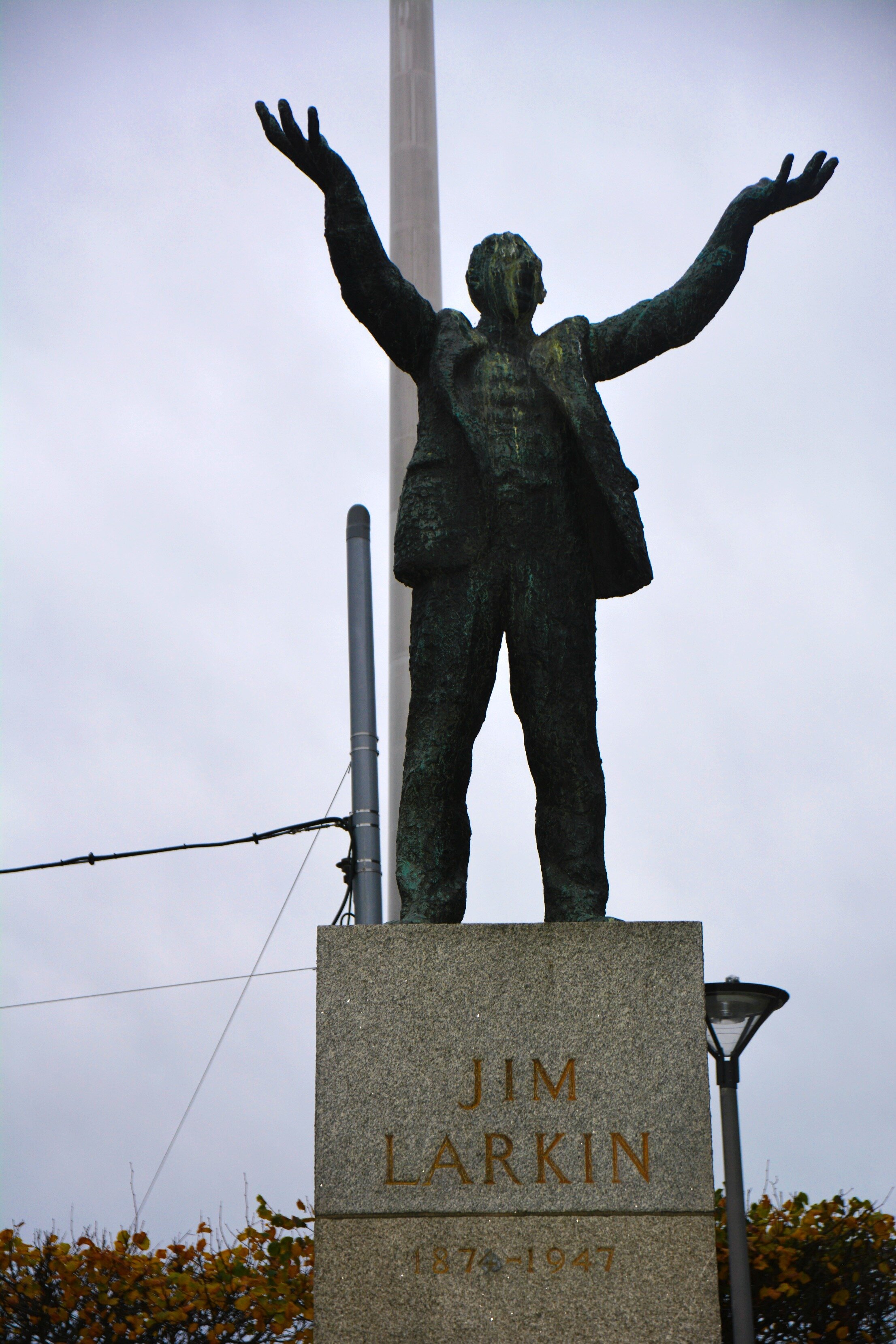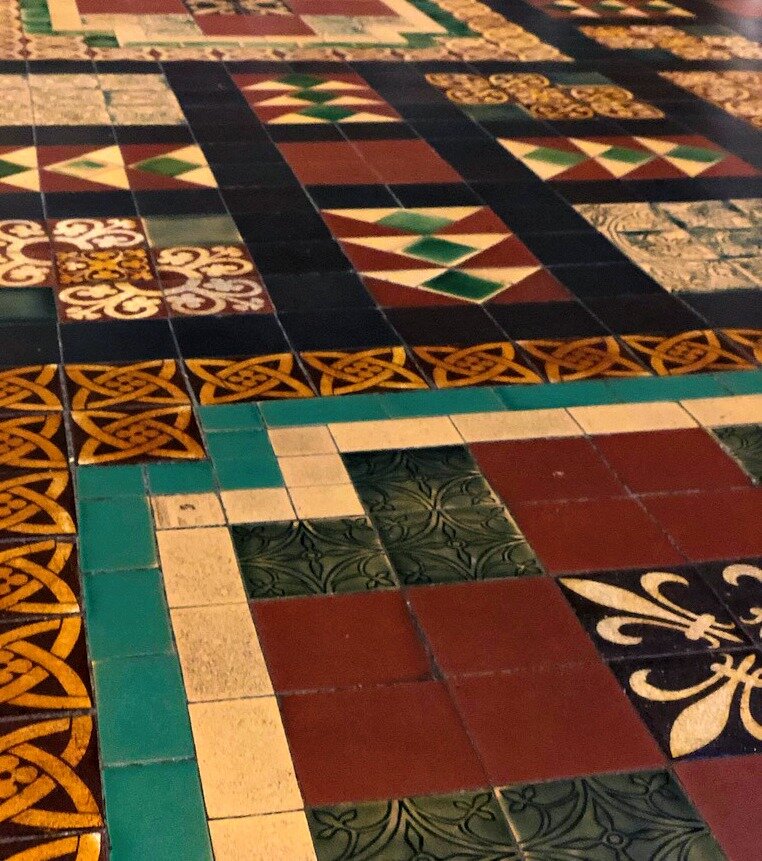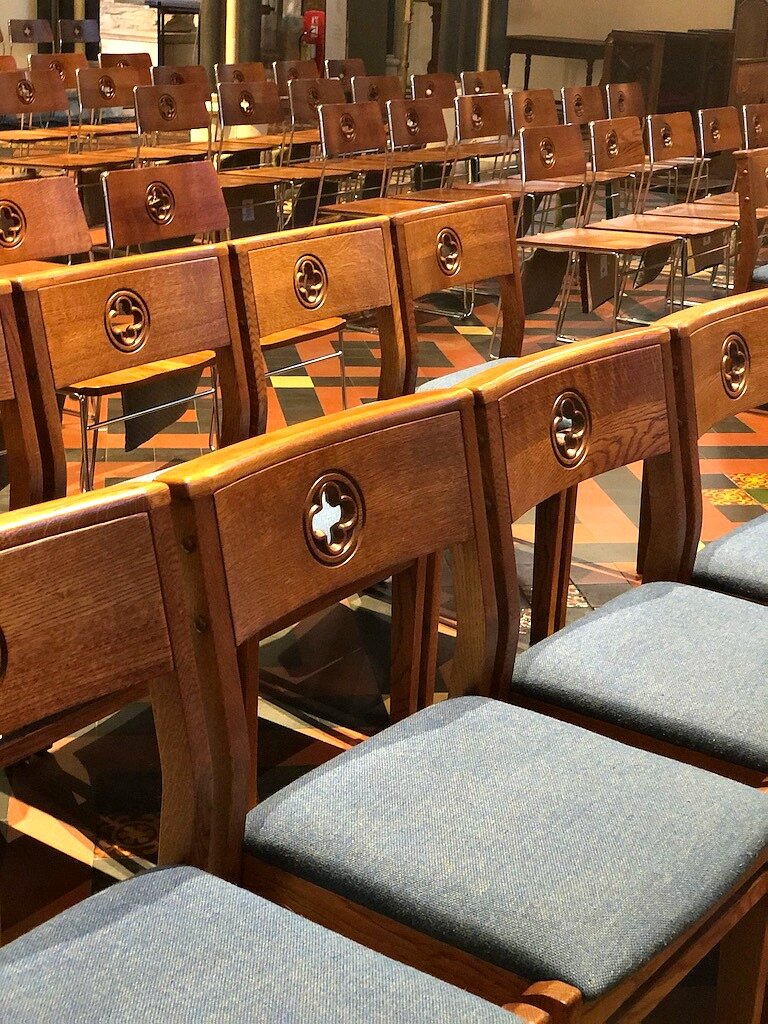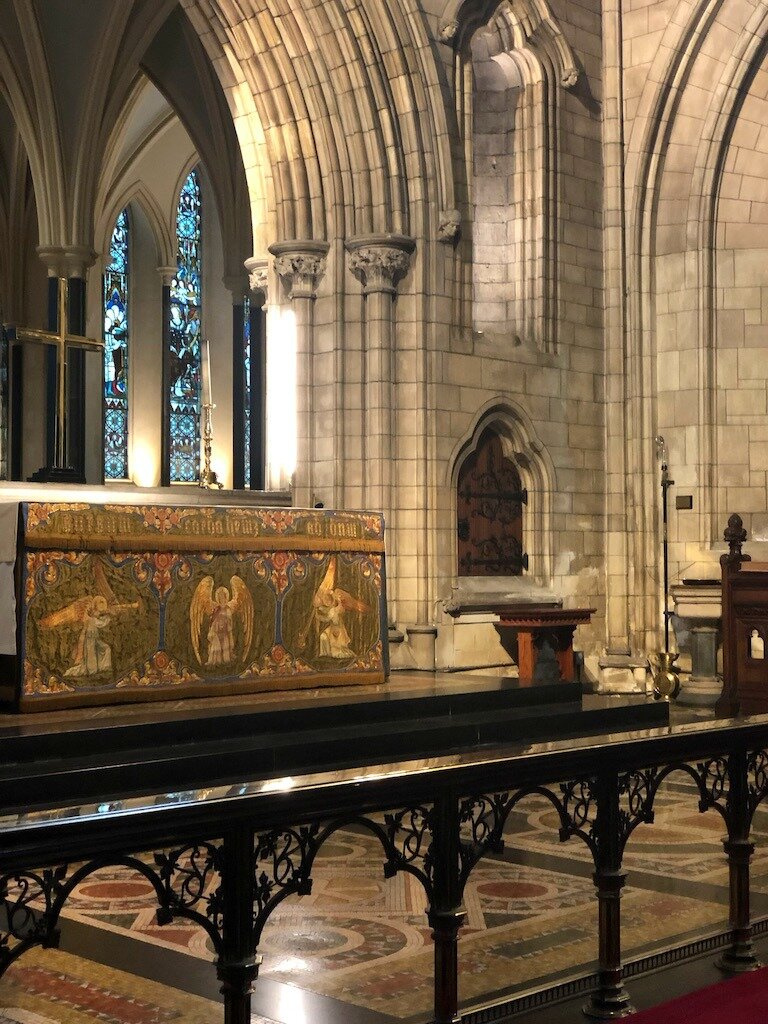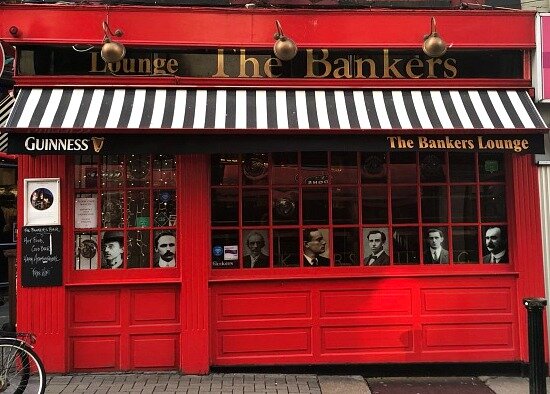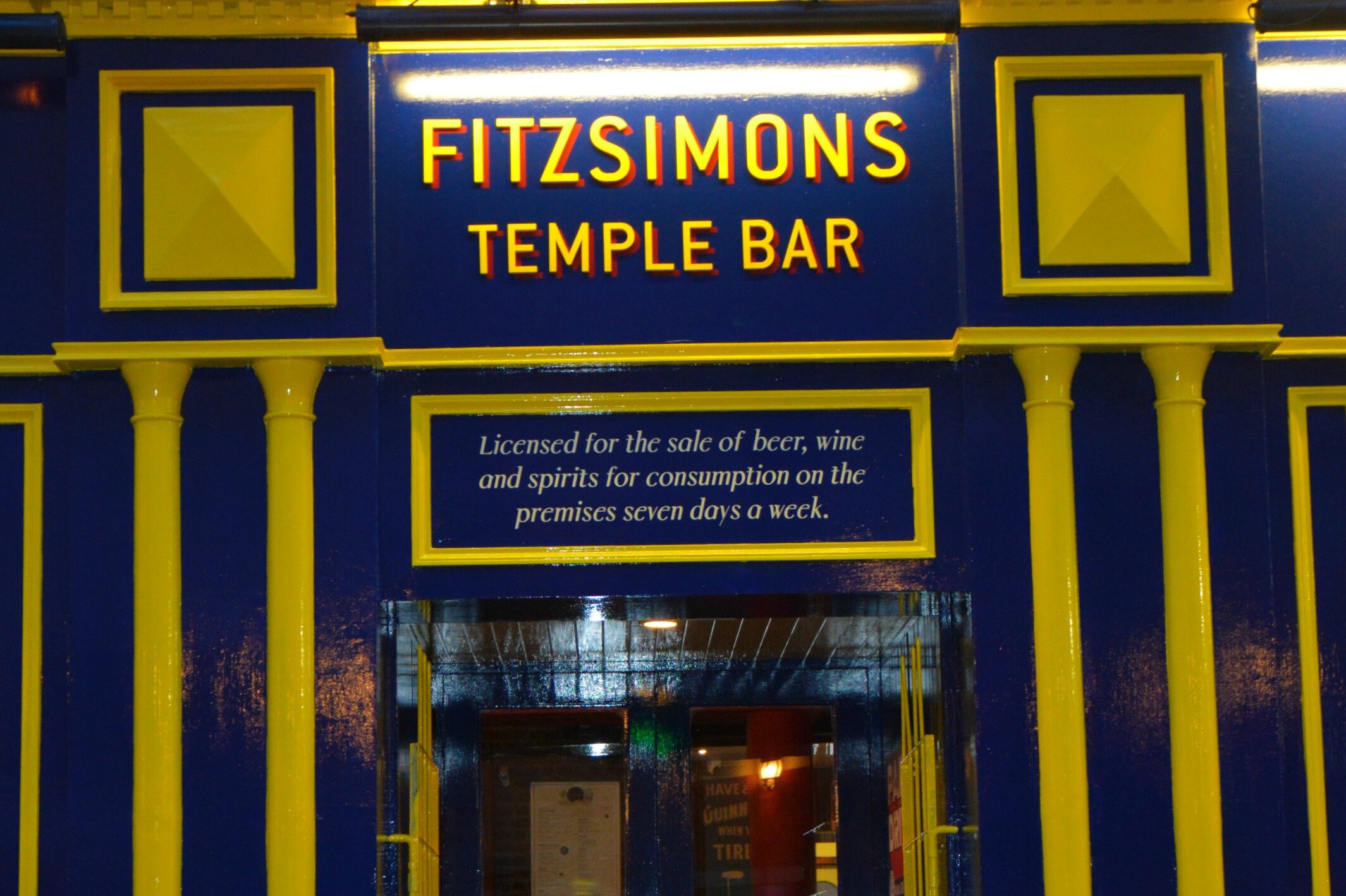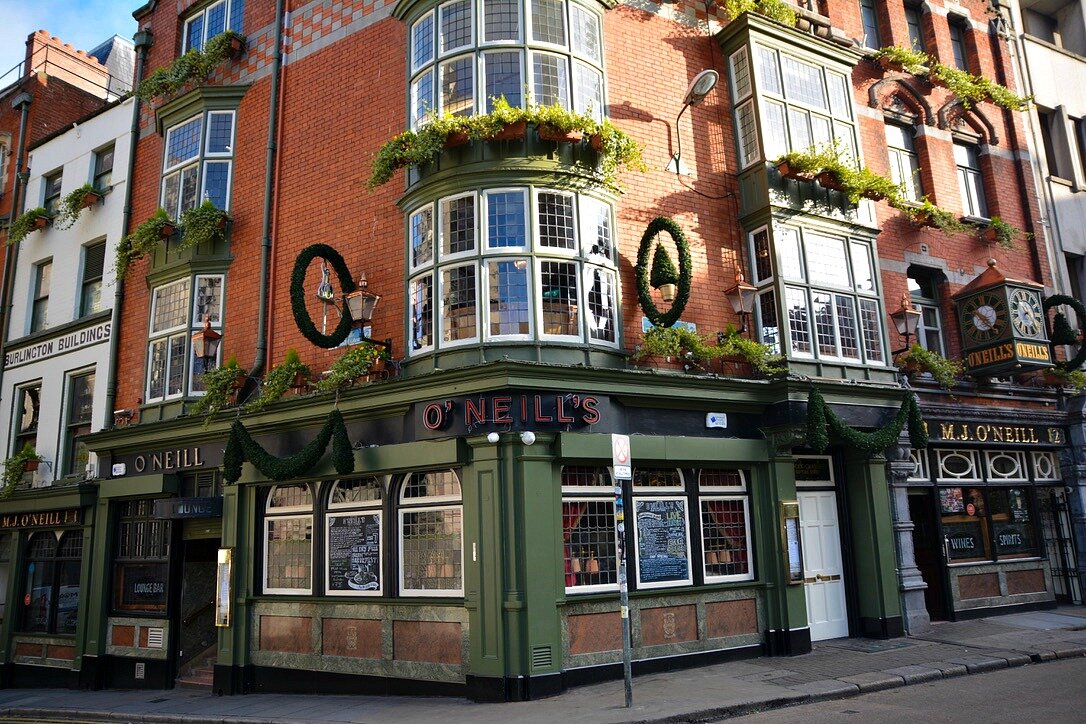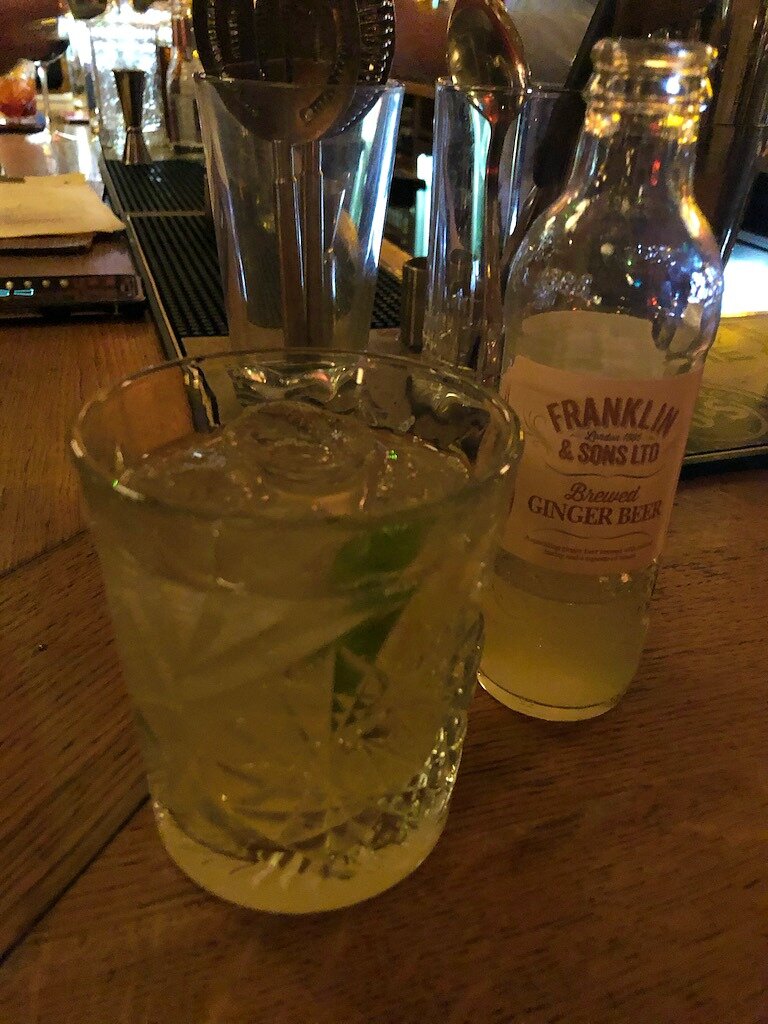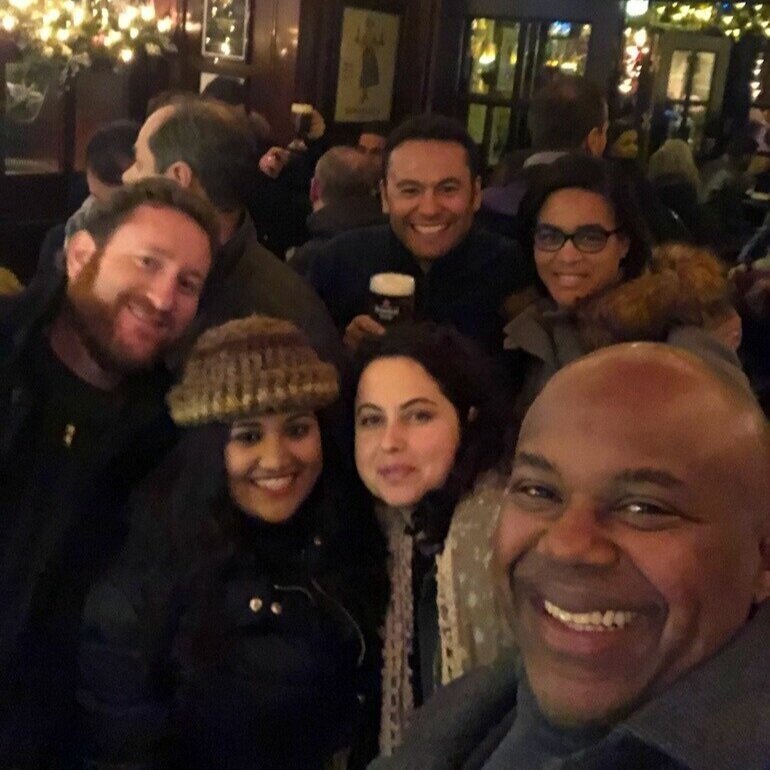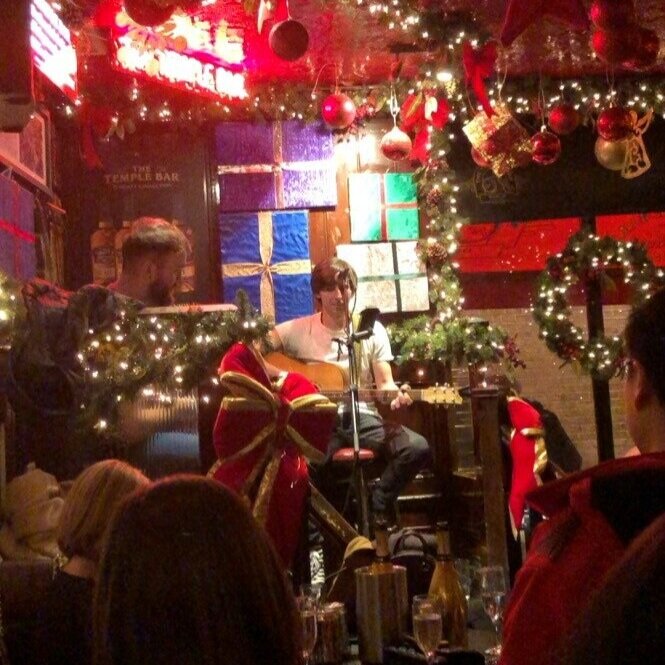Discover Ireland's Vibrant Capital in 48 Hours: This is Dublin

Dublin
53.3498° N, 6.2603° W
In November, we had the opportunity to visit Dublin, Ireland. Dublin is a charming city with lots to see and do…. sadly, we only had two and a half days as an introduction. We maximized our time here with a packed schedule. Here’s our list of what to see in Dublin with a limited time.
SAINT STEPHEN’S GREEN
St. Stephen’s Green is a victorian park conveniently located in the Center of Dublin — it covers about 22 acres and has lots of walking paths to amble your way through. The main entrance is through the Fusiliers’ Arch, at the top of Grafton Street but, there are also a few other entrances along the perimeter. It was directly across the street from our accomodations at The Shelbourne Hotel and we found it also to be the perfect starting place for our stay in Dublin. The grounds of St. Stephens are beautiful. There is an abundance of trees and bushes along the perimeter and even though traffic borders the park on all sides, you don’t notice any noise…. the trees seems to buffer all of that activity. There’s a serene pond with ducks and geese and what we really appreciated are the plaques that are located along the walkway — take the time to read them — they give a descriptive account of the 1916 Easter Rising. Fun fact….. St. Stephen’s Green is also where the band U2 played their very first gig.
GRAFTON STREET
Grafton street — a bustling avenue from St. Stephen’s Green to Trinity College — is a charming maze of shops selling anything from local Dublin chocolates to men’s fine suits. Shopping opportunities abound in Dublin and you can find many brands that are not carried at home in the United States. There are also beautiful flower stalls on each street corner with ladies selling fresh bouquets. The Flower Ladies of Grafton are endeared to the people of Dublin who recently came to their defense after the real estate firm who owns the shopping plaza reported that they were no longer welcome to sell their flowers on Grafton Street. There was so much public backlash that the organization apologized and withdrew their request for the ladies to leave. Bravo! They added charm and a splash of floral color to this area. We also enjoyed the streets that branch off of Grafton…. our favorite was St. Anne Street — if you see a sweet church with a candy apple red door at the end you’ll know your in the right place. Kevin found a men’s store at the end with handsome suits and jackets and I found this colorful installation of umbrellas hanging in front of the Zuzimus Bar!
Sidenote: If shopping is your thing and time allows, we suggest you also visit the Powerscourt Townhouse Center (not far from Grafton). Powerscourt has a collection of luxury boutiques and a really nice cafe + bakery to rest your feet. Not far from there, is another location called George Street Arcade —- there you’ll find an eclectic mix of independent boutique shops carrying unique gifts and collectibles.
BUSKERS
All throughout Dublin are really talented people busking as they share their musical talents. We listened to some really impressive vocalists and musicians! Grafton street is one of the busiest streets in Europe — boasting a whopping 9,000 pedestrians an hour! I’ve since learned, as a result, it is somewhat of a rite of passage for music artists. Because of increased popularity of busking in this neighborhood, they now have strict regulations and license fees. During our stay we heard vocalists and musicians who were local Dubliners as well as artists visiting for the weekend from London, Belgium and Spain. On occasion, megastars like Bono and Glen Hansard have been known to make a surprise visit…. who knows, perhaps you’ll have the opportunity to see a future star yourself!
TRINITY COLLEGE
At the north end of Grafton Street you’ll find Trinity College. Founded in 1592, it is Ireland’s oldest higher education institution and it has produced literary giants such as Oscar Wilde and Samuel Beckett. The University itself is a destination on its own but, i was most interested in two other treasures found here —- The Book of Kells and the Long Room. The Book of Kells is a 9th century manuscript of the four Gospels of the New Testament (Matthew, Mark, Luke and John) and is described as Ireland’s greatest cultural treasure. We arrived to find The Book unavailable as it is being protected for conservation reasons until March 2020… . they currently have an exhibition with photos and information in its place.
Upstairs from The Book of Kells is the majestic library —- The Long Room. This magnificent room looks like it was pulled right out of a scene from Harry Potter (though this isn’t that library). Dark, rich, oak bookshelves, reach two stories up to elegant vaulted ceilings — they hold a massive collection of literary treasures…. 200,000 to be exact!
DOCKLANDS TO MONUMENTS OF O’CONNELL STREET
The winding River Liffey cuts Ireland’s capital in half - Northside and Southside - and was a beautiful way to familiarize ourselves with the layout of the city. We started our walk at the end known as the Docklands (which seems to be going through a revitalization) passing the harp shaped Samuel Beckett Bridge.
In this area you’ll find the Irish Emigration Museum as well as an elaborate ship, the Jeanie Johnston. The Jeanie Johnston is a grand ship that played an important role in transporting Irish emigrants to the United States during the Irish Famine. This ship made sixteen emigrant voyages without losing a single passenger….. their 50-minute tours offer insight into the Great Famine and the Irish emigrant experience.
The walk along the Liffey is a busy thoroughfare as it leads to O’Connell Street….. sprinkled with a collection of older buildings and more modern, colorful storefronts. Keep your eyes open for the seven bridges that cross over the river — each has its own architectural style.
Turn onto O’Connell Street towards the historical General Post Office and plaza that hosts the Modern Spire Monument. During the Easter Uprising of 1916, this site was the home of the uprising’s leaders. Today it operates as a working post office. Opposite the GPO is the Dublin Spire (also called The Monument of Light) and the Monuments of O’Connell Street — celebrating important figures in Irish history.
ST. PATRICK’S CATHEDRAL
Saint Patrick’s Cathedral is the National Cathedral of the Church of Ireland. Jonathan Swift, author of Gulliver’s Travels, was Dean of Saint Patrick’s Cathedral in the 1700s and he is one of many burials on site. It is built in an English Gothic Style and has a ceiling of elaborate buttresses….. be sure to look down when you enter St. Patrick’s, the mosaic tiled floors are incredible.
VISIT A PUB + ENJOY THE NIGHTLIFE!
A trip to Dublin would not be complete without ducking into one of the many pubs. Half of the fun was admiring the colorful pubs during the day — a menagerie of brightly painted fronts and funky names…… we made note of places we might want to return to in the evening.
We met up with a friend at L’Gueuleton on Fade Street—- catching up over drinks (beers for the guys + a ginger beer for me). David was kind enough to share a bit of Dublin’s history and local politics. Like the United States, Dublin seems to be battling some of the same issues we have here at home….. especially, affordable housing. David also suggested a day trip to the fishing village of Howth (we went the next day)! We finished the evening with a short walk over to the iconic Temple Bar. Yes, the Temple Bar area is a magnet for tourists but, that did not take away from the time we spent there. It is a lively neighborhood with many pubs and restaurants to choose from. We met up with more friends at the very crowded Temple Bar and were treated to lively music by a local band. It was a fun, memorable evening that gave us a slight glimpse into Dublin nightlife and the perfect way to close our trip to Dublin. These 48 hours wet our appetite enough to know we will be returning to Ireland soon to learn more about this beautiful country.
Have more than 48 hours? You may want to visit Dublin Castle for a bit of history. Dublin Castle is the heart of historic Dublin. It is one of the most important buildings in Irish history. The city gets its name from the Black Pool - 'Dubh Linn' - which was on the site of the present Castle garden. Or perhaps you want to learn a bit more about the stout you had in the pub the night before then, the Guinness Storehouse might be a must-see!
Dublin, with its rich history, vibrant culture, and friendly atmosphere has left a lasting impression on us — we can’t wait to return and see more of this beautiful country……. Hopefully, our next visit will be longer than 48 hours!

